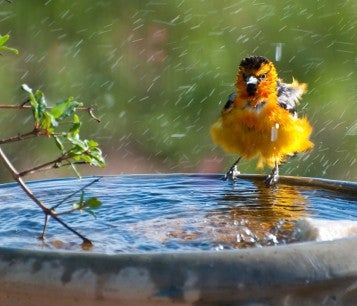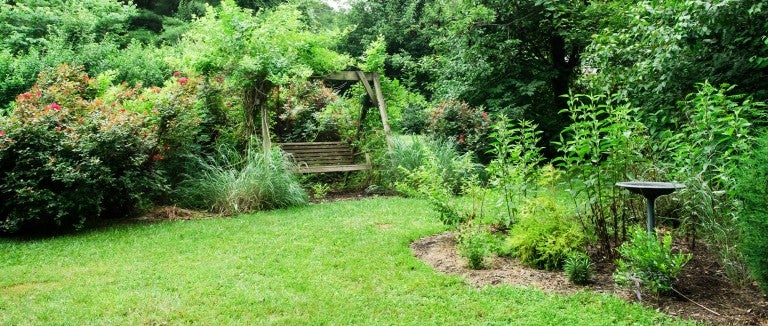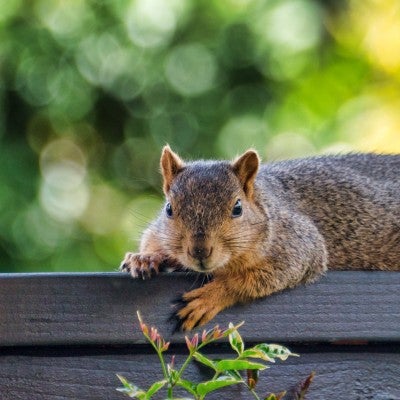Ah, the sounds of summer! Listen to the dawn chorus of songbirds, the buzz of cicadas during the heat of the day, the chirps of crickets and deep croaks of bullfrogs in the evenings.
And then there's that competing cacophony that we hear nearly all our waking hours: The relentless drone of lawn mowers, as we crop acre after acre of our cherished suburban habitat.
Now more than ever it is time to question the obsession we have with the Great American Lawn. The vast acres of mowed grass represent lost habitat for wildlife, sterile environments for people, wasteful consumption of fossil fuels and hours lost experiencing the outdoors from the back of a machine.
Lawns aren’t necessarily all bad. They have their uses and purposes and nothing better provides a surface for sports and backyard entertaining—for kids, adults and pets. But if there can be too much of a good thing, lawns certainly fill that bill.
Wildlife-friendly alternatives
Save for Canada geese and some other turf-loving animals, lawns offer little habitat to our wild neighbors, who are already at a disadvantage in our urbanizing world. That’s where well-designed lawn alternatives come in. And if you’ve been thinking about a yard makeover, spring is the perfect time to get started.
Shrinking your lawn and creating wildlife habitat will save time and money on care and maintenance, since the new landscape should require only minimal work over the long term. That leaves you with more time to spend enjoying your property and its wild inhabitants.
Top wildlife-friendly lawn alternatives
- Beds of native nectar, berry and seed-producing plants favored by wild animals.
- A meadow on a portion of your property.
- A water feature, such as a small pond.
- Shelter for wildlife, such as a brush pile or rock pile in a corner of your yard.
- Drought-tolerant plants ("xeriscaping") in dry parts of the country.
No matter how big or small your outdoor space, you can create a haven for local wildlife. By providing basic needs like water, food and shelter, you can make a difference in your own backyard.

A costly crop
High-maintenance turf sucks up water, not to mention the untold gallons of gasoline burned by mowers. Americans spend nearly $30 billion annually on fertilizing, watering and mowing our estimated 31 million acres of turf; maintenance of an average-sized yard costs more than $3,000 a year!
And then there are the environmental costs. Upwards of 60% of the chemicals in fertilizer can leach into groundwater, causing serious environmental problems.
Nitrogen gases are also a major culprit in global warming. Mowing one average-sized lawn produces emissions equal to driving a car about 350 miles, according to the State of California.
Making a smooth transition
The simplest and fastest way to create a natural landscape from a lawn is … don’t mow. So your human neighbors don’t fuss over the unruly “eyesore” next-door, better to not let your entire lawn go wild and not all at once. Limit the no-mow zones to the corners or less-trafficked areas of your property. Continue to mow around them to create a neat “island” look.
Your naturalized areas will offer food and shelter for wildlife and they will diversify over time as seeds are permitted to grow and thrive. Plant native nectar-producing plants bring in pollinators such as butterflies, bees and hummingbirds.
Clearing your turf
To install a new wildlife-friendly feature or new plantings, you'll first have to strip away the lawn. There are several ways to do this:
Cutting: Enlarge existing beds when edging them—even as little as an inch or two a year. For larger projects, cut moistened turf into squares or strips with a spade, then remove or roll it up and flip it turf side down. This is a lot of work, so unless you’re dealing with a small space, consider renting a sod cutter.
Tilling: Rent a tiller to chop and churn the sod. Let the area rest for several weeks, then till again before planting. On the second pass, you can till under any stray grass roots and weed seeds that have sprouted. Add compost as you go to enrich the organic matter and help your new plantings thrive.
Mulching: If you are patient and prefer a low-cost, low-sweat method, try sheet mulching. Cover the lawn with several layers of organic material (think forest floor). Over time, the combination of layers and heat will break down the lawn.
- Spread a one-inch layer of newspaper or cardboard over the unwanted grass and thoroughly wet it down.
- Layer 2-4 inches of mulch or compost material over the paper layer and thoroughly wet that layer.
- Allow the grass to die and decompose (about 2-3 months). You can then plant right in the remaining mulch.
Less lawn, more harmony
Shrinking your lawn and creating wildlife habitat will save you time and money on care and maintenance. That leaves you with more time to spend enjoying your property—and its wild inhabitants.

